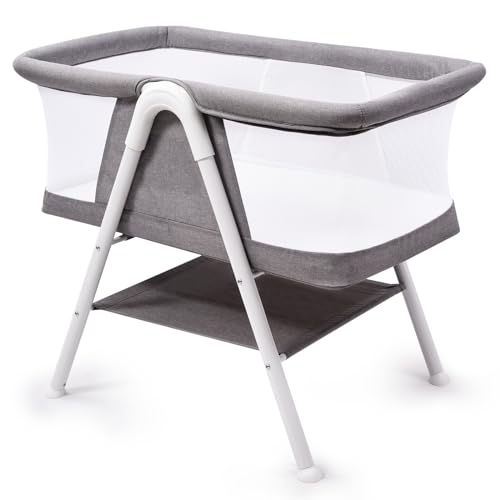Tots and Cots: A Comprehensive Guide for Parents
When it pertains to guaranteeing a safe and comfy sleeping environment for children and young children, the choices parents make-- varying from cribs to cots-- can significantly impact their well-being. Today's post dives deep into the complexities of choosing the best sleeping plans for tots, highlighting safety, design, functionality, and how these choices evolve as a child grows.
Understanding Tots and Cots
Tots usually refer to young kids, particularly toddlers aged in between 1 to 3 years, while cots are the sleeping arrangements particularly designed for infants and toddlers. The proper sleeping devices for this age consists of different types of cots, cribs, and toddler beds.
Kinds of Cots
Various styles exist to meet the varied requirements of both moms and dads and kids. Below is a list laying out the most common kinds of cots offered:
Standard Crib
- A conventional crib is developed for infants and generally consists of sides that can be adapted to various heights.
Convertible Crib
- This kind of crib can transform into a young child bed, daybed, or full-sized bed as the kid grows, making it a long-lasting investment.
Portable Crib
- Likewise called travel cots, these are light-weight and easily foldable, perfect for traveling or smaller living spaces.
Co-Sleeper
- A co-sleeper crib connects to the side of the moms and dads' bed, enabling easy access while guaranteeing the baby has a separate and safe sleeping area.
Toddler Bed
- A toddler bed is a small bed that resembles a standard bed but is created particularly for young children, normally featuring safety rails.
Mini Crib
- Mini cribs are smaller sized than standard cribs, making them a fantastic option for tight spaces, but they appropriate for babies just.
Security Considerations
Ensuring safety is vital when choosing a cot for a child. Here are important security guidelines parents should think about:
- Check for CPSC Certification: Ensure that the cot follows the Consumer Product Safety Commission (CPSC) standards.
- Prevent Drop-Sides: Cots with drop-sides have been linked to security hazards, and the most recent security regulations prohibit them.
- Utilize a Firm Mattress: A company bed mattress decreases the danger of suffocation and must fit comfortably within the cot.
- Keep Bedding Simple: Use a fitted sheet and avoid pillows, comforters, and stuffed animals that can posture suffocation threats.
- Follow Weight and Age Guidelines: Ensure the kid has not exceeded the cot's weight limitation and is still within the advised age.
Transitioning from a Cot to a Toddler Bed
The transition from a cot to a toddler bed can be an emotional milestone for both parents and kids. Here are actions to relieve the transition:
Timing
Choosing when to transition can be subjective, but it's usually advised to make the switch in between 18 months and 3 years, based upon factors like:
- Physical Ability: If the child is climbing up out of the cot.
- Potty Training: Consider transitioning if the child is potty training and requires much easier access.
- Behavior: Exhibiting indications of maturity, such as following directions or expressing a desire for independence.
Tips for Making the Transition Smooth
- Include Your Child: Let the kid choose their brand-new bed linen or bed decoration to impart excitement about the change.
- Keep Routine Consistent: Maintain the kid's bedtime regimen to supply convenience throughout this period of change.
- Discuss the Change: Discuss the shift to a young child bed favorably, making it sound like a terrific adventure.
- Precaution: Place the bed against the wall or use bed rails to prevent falling throughout sleep.
Selecting the Right Bed
When selecting a young child bed, moms and dads require to consider aspects like:
- Height: Low-profile beds are perfect for toddlers who may fall out during sleep.
- Resilience: Ensure the bed can hold up against active play along with sleep.
- Design and style: Choose a design that matches the kid's space and is appealing to the kid.
Picking the right cot for your child can be a complicated procedure, but understanding the choices readily available, essential security considerations, and the right timing for transitioning to a young child bed can make this journey simpler for parents. Cot Sales and time into these choices will ensure that your kid has a safe, comfortable, and nurturing sleep environment.
Frequently asked questions
1. What is the distinction in between a cot and a crib?
- A cot is normally a smaller bed created for younger toddlers, while a crib is a bigger bed that is usually appropriate for babies approximately 3 years of ages.
2. When should I move my child from a crib to a toddler bed?
- The shift time is usually between 18 months and 3 years; this change is based upon the child's physical abilities and behavioral indications.
3. How can I ensure my child is safe while sleeping?
- Constantly abide by safety standards, use a company mattress with a simple bedding arrangement, and keep an eye on the cot's weight limitation.
4. What should I do if my kid tries to climb out of the cot?
- If your child is climbing up out, it might be time to consider transitioning to a young child bed to avoid falls.
5. Can I use the exact same mattress when transitioning?
- Normally, it is best to change the crib bed mattress with one that is particular to the young child bed. Ensure it fits snugly and adheres to safety requirements.
By thinking about these aspects, parents can design healthy sleep practices and supply their kids with a protected environment that promotes peaceful sleep. Buying click hyperlink sleeping arrangements will contribute to the child's overall development and happiness.

